- Accueil
- Voyages thématiques
- Nos Circuits En Inde
- Destinations
- Offres Promos
- Contactez-nous
- Accueil
- Voyages thématiques
- Nos Circuits En Inde
- Destinations
- Contactez-nous
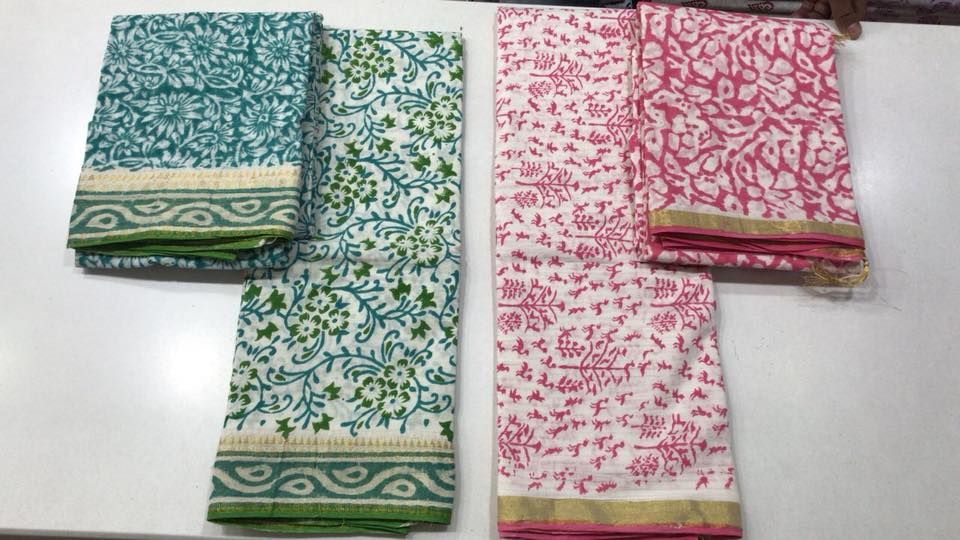
The best place in Vadodara to shop for handprinted dress material, Baroda Prints was established more than 50 years ago. It sells ethnic and traditional wear, tops, skirts, sarees and salwars. Its designs are exquisite and handprinted in bright colours that Gujarat is known for.
... You can also shop for home materials like bed sheets and covers here. Most of their products use the traditional hand-block printing technique. Ajarakh, matani-pachhedi, batik and saudagiri are some of the woodblock prints that Gujarat is famous for. A wide range of textiles is artistically decorated through the method of printing on textiles with incised wooden blocks. Even though it is a slow and a manual process, the products have high aesthetic value. A variety of patterns are carved onto teak wooden blocks, which are then dipped into coloured paste and pressed onto the cloth to form complicated designs. The cloth is kept soaked overnight and then repeatedly washed to make quality products. Lire la suiteWoodcarving is an ancient art form that can be commonly seen in most temples and homes in the state of Gujarat. You can also find exquisite carvings on tea pots, table lamps, stools and kids’ toys. There are mainly three types of carvings that can be found in Gujarat- the Hindu work that is mainly focused
... on idols of the deities (Goddess Lakshmi and Lord Ganesha are favourites among wood carvers); the kind found in Muslim houses with abstract and geometric patterns and the intricate carvings and floral motifs found in the balconies of old houses. Circuits au Gujarat avec agence francophone Namaskar India Tour. The best examples of fine woodcarving can be found within projecting balconies and floors of mansions in Vadodara. Door frames, lintels, shafts, inlay work that uses coloured wood and plaques are all examples of this handicraft. You can easily shop for wooden souvenirs in any market in Vadodara. While exploring the markets, you can buy chairs, cradles, stools, idols, chiselled boxes, chests, cupboards, swings and so much more. The wood-carving community, across Gujarat, is known as 'mewara mistris'. Sometimes, pieces of plastic, bone, metal and fine wires are also used to make carvings and patterns on wood. Most of the inlay work is done on teak, rosewood or sandalwood. Bahuv wood is sometimes used to make replicas of fine artefacts. To further enhance the aesthetic value of the woodcarving, mistris also embellish mirrors into the products. Lire la suite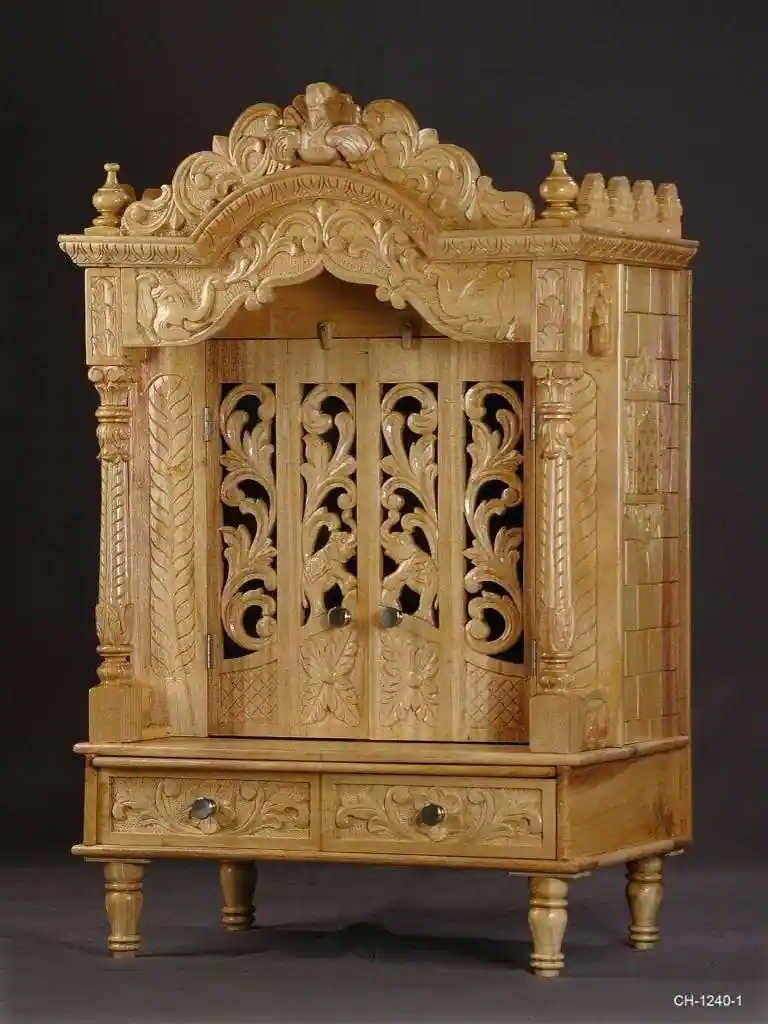
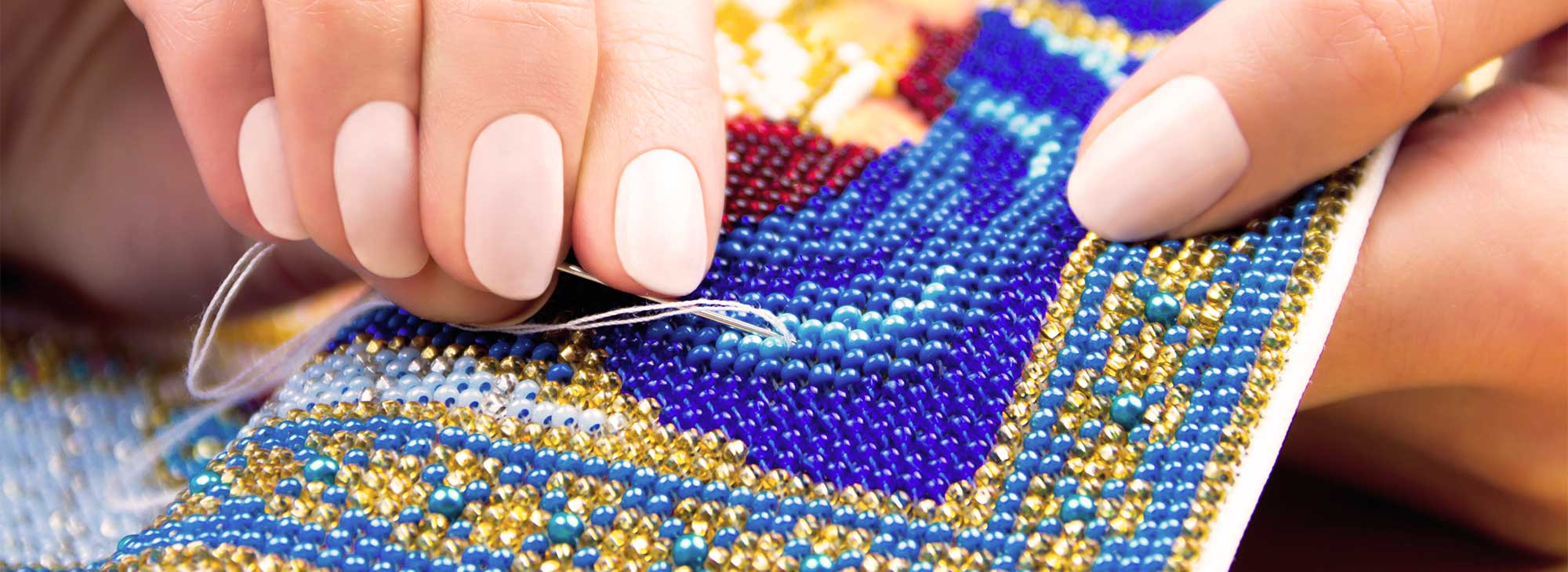
The state of Gujarat is often known as Moti Bharat across India for its gorgeous beadwork handicrafts that require stringing together more than three beads of different colours and styles. The art form is used to make home décor items. Beadwork also produces jewellery,
... including necklaces, bangles and earrings. The art originated from the Saurashtra region and spread to Rajkot, Bhanagar, Amreli and Junagadh districts, apart from Ahmedabad. The tribal artisans of Panchmahal and Vadodara make stunning traditional bead jewellery and ornaments. When the bead patterns are worked on and wrapped around solid objects such as pots, the resultant three-dimensional product is breathtaking. Pretty motifs are used to decorate the items. The beads are often stitched on cloth to produce attractive garments like scarves and dupattas. When the beads are firmly stitched together with lot of intricate work, they can also be used to make bags. Lire la suiteThe town of Sankheda, about 50 km from Vadodara, is renowned for its lacquerwork, which is a beautiful craft practiced on country wood. Sankheda’s art form is the perfect example of brilliant craftsmanship in terms of woodworking, woodturning and handpainting. This art is mostly practiced by the artisan community of Kharadi Suthars,
... who make colourful wooden furniture. The community prefers to use handheld tools and rather simple methods. The tradition of handpainted furniture in the region is said to have been in existence since the 1800s. Wooden blocks are turned on lathes (machines that rotate a workpiece about an axis to perform operations like cutting, sanding, drilling, etc.). The wooden piece is then shaved and smoothened for a rounded shape. Each piece is then painted in bright colours like vermillion and green and is mostly bordered by gold or silver hues. Simple and delicate floral patterns, peacock motifs and abstract drawings are used for decoration. A brush of very fine hair is used for the painting. When all the pieces are prepared, they are coated with lacquer and drilled to create space for tongue and groove and other joinery equipment. Voyage au Gujarat pas cher avec agence de voyage Namaskar India Tour. The pieces are then put together to create furniture that is simple yet stunning. Apart from furniture, lacquerwork is also used to make wooden temples. Lire la suite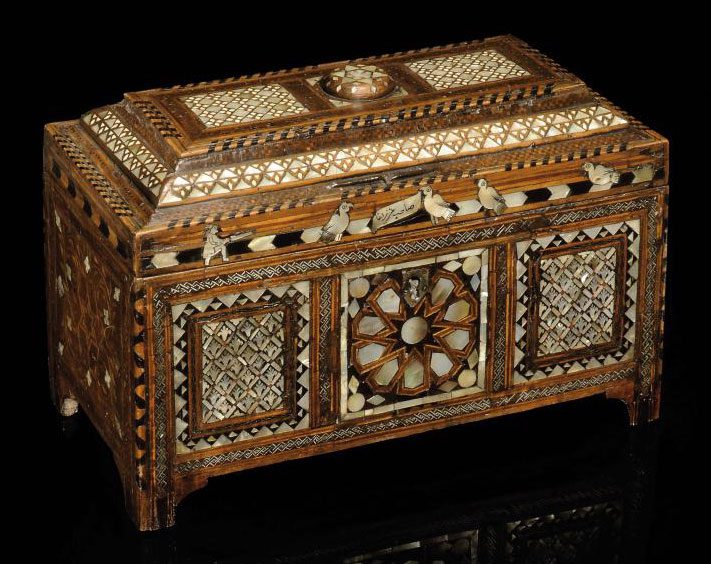
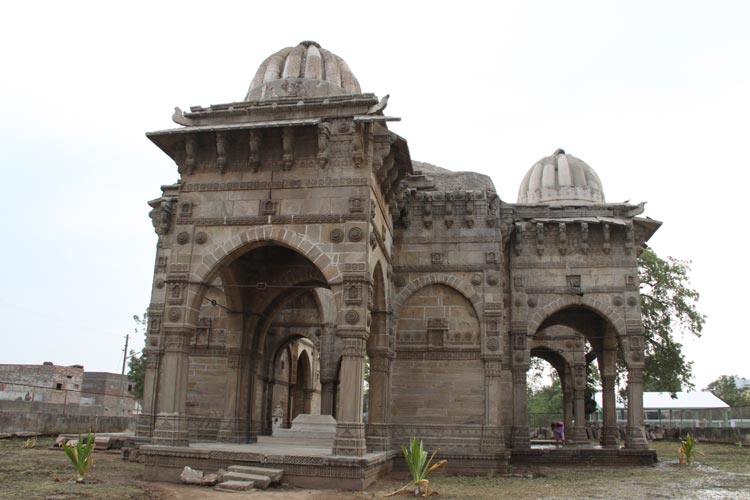
Located on the outskirts of Vadodara is the historical site of Sikandar Shah’s Tomb. Sikander Shah was the ruler of Champaner and was assassinated in 1526 AD. He was later buried at Halol beside two of his brothers. The mausoleum where his tomb lies was built by Sultan Bahadur Shah of Gujarat.
... With simple fluted domes, the tomb is made in sandstone and is considered a masterpiece of architectural craftsmanship. The single-storeyed mausoleum has seven domes - two central and five smaller. It has been built on an elevated plinth in the Ahmedabad style of architecture. The interior is adorned with intricate floral patterns and geometric designs, especially on the pillars. The small, fluted capolas (a rounded dome) still stand here even though the central domes have crumbled. A chamber at the mausoleum also houses the graves of Bahadur Shah’s two brothers - Nasir and Latif, who also died in the same year. Lire la suiteOriginally known as Darbhavati, the ancient fortified town of Dabhoi is significant for the Jain religion and finds mention in the scriptures of Girnar. With six temples including Sri Lodhan PaBuilt in an Italian style of architecture, Makarpura Palace is a gorgeous structure that once served as the summer home of the Gaekwad royal family.
... Circuits au Gujarat sur mesure avec Namaskar India Tour. It was commissioned by Maharaja Khendarao Gaekwad II and its construction was completed in 1870. It is said that the Maharaja spent a lot of time here on his hunting trips. The palace is a three-storey structure that is divided into two parts and has more than 100 ornate brick rooms, along with frame-arch balconies and wooden staircases. The highlight of the palace is its Japanese-style 130-acre garden. Designed by William Goldring, the architect of the royal botanical gardens, the garden at the palace was named Kew and had a swimming pool and a lake with swans. There were ivory fountains as well that were activated to welcome the king every time he came to visit the palace.arshvnath Temple, it is a popular pilgrimage site of the Jains. Situated around 35 km from Vadodara, Lire la suite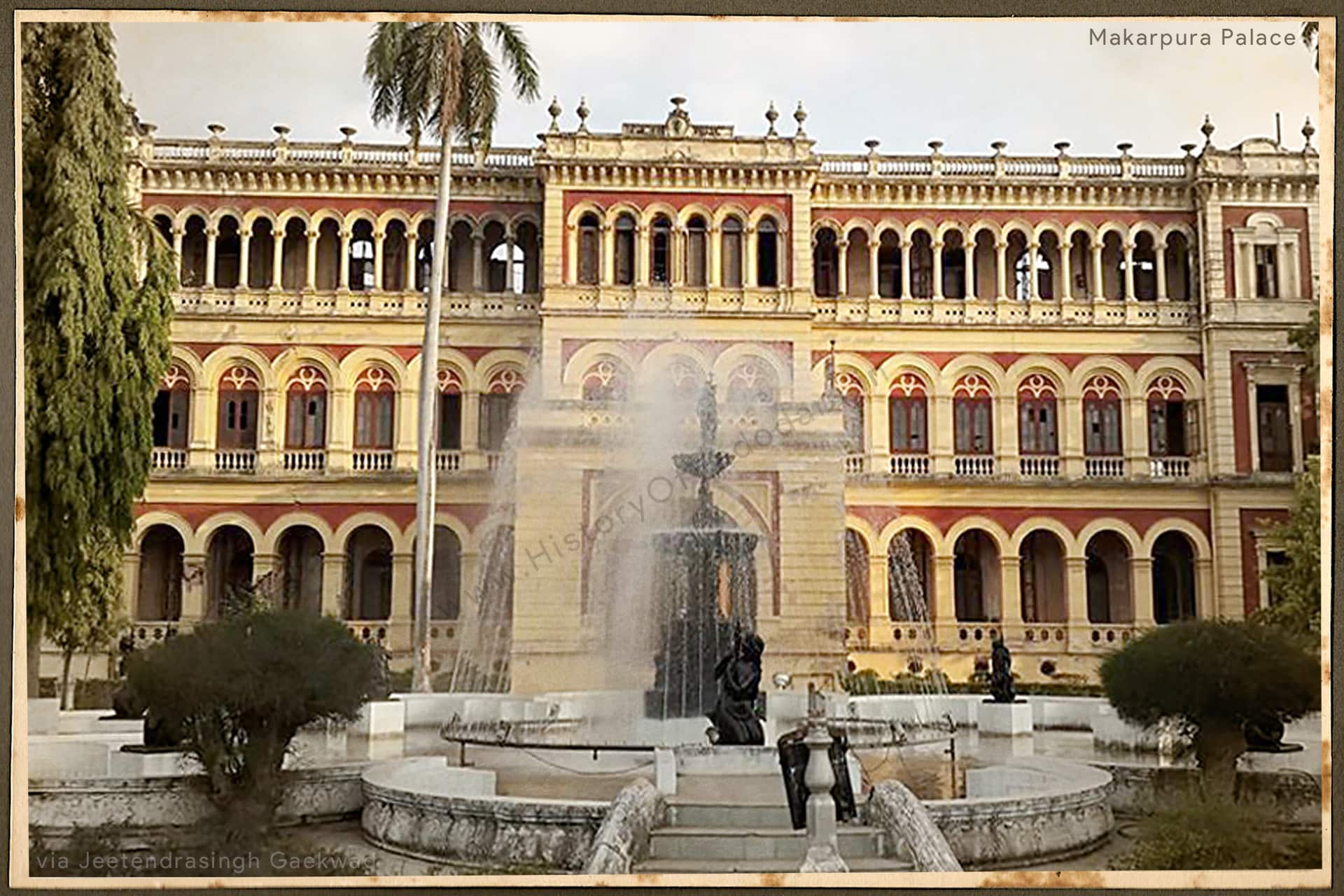
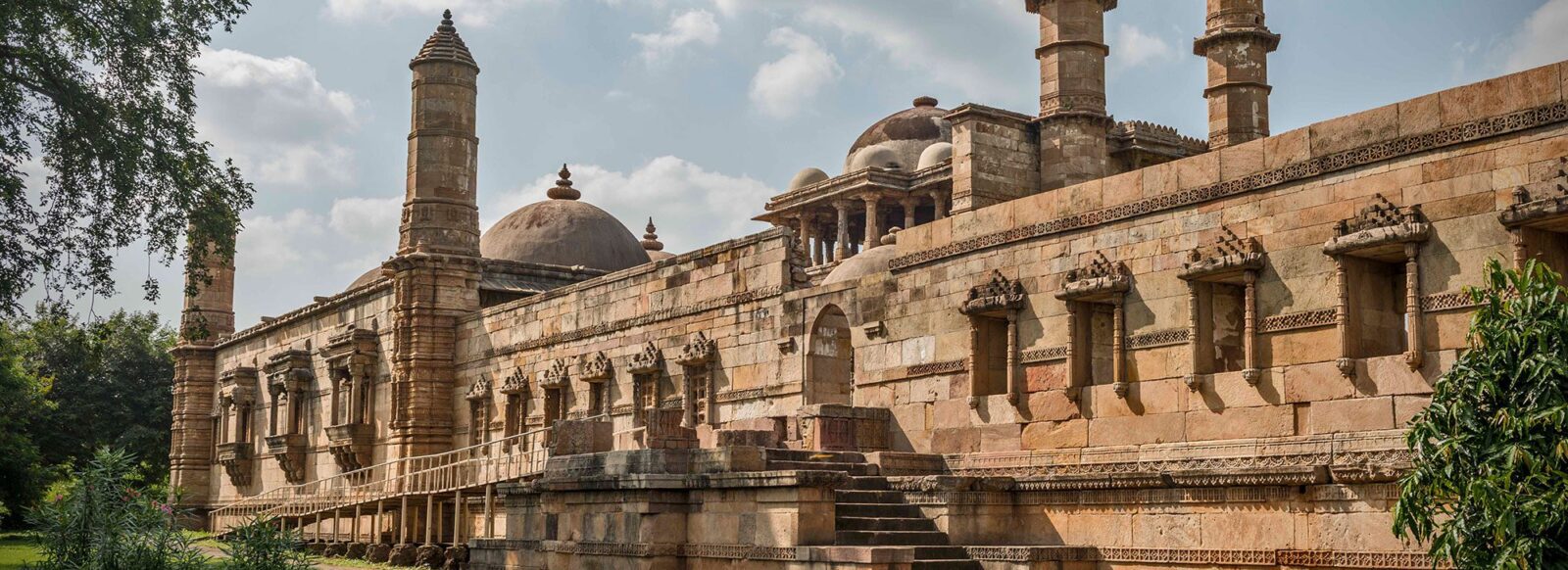
The ancient city of Champaner, around 50 km from Vadodara, is best known for the Champaner-Pavagadh Archaeological Park, a designated UNESCO World Heritage Site. To get a peek into history, walk around this splendid site that is a well-preserved Islamic pre-Mughal city.
... From archaeological and cultural sites to a hill fortress and the remains of a capital city of Gujarat in the 16th century, there are plenty of historical gems in the area. Champaner has a number of mosques, including the famous and magnificent Jama Masjid, Sahar Ki Masjid, Gumbai Ki Masjid, Kevasa Masjid and Nagina Masjid, most of which were made in the 15th century. The stunning fortress of Champaner is another must-visit site, which has earned a reputation for its blend of Hindu-Muslim architecture. There are also plenty of well-preserved Hindu and Jain temples that are a sight to behold. A great city of antiquity, Champaner once stood tall and proud. Re-discovered centuries later, it makes for an extremely fascinating visit for the history buffs. It was once the capital city of Gujarat. Champaner was ruled over by several dynasties including Chauhan Rajputs, Marathas, Mughals and more till it saw decay. Lire la suiteEstablished in 1961, Maharaja Fateh Singh Museum is located in the grounds of Lakshmi Vilas Palace. It has been built inside what was Motibaug School, constructed for Maharaja Sayajirao Gaekwad III in 1875. Constructed in the Indo-Saracenic style of architecture, the museum houses a collection of the Gaekwad royal family’s personal belongings.
... It also has exhibits of royal paintings and art treasures. Apart from a collection of portraits by renowned artist Raja Ravi Varma, including portraits of the royal family, the museum also houses works of Raphael, Rembrandt, Murillo and Titian. Voyage sur mesure au Gujarat avec Namaskar India Tour. A fully operational toy train, which Prince Ranjitsinh Gaekwad had received on his fifth birthday, finds a place of pride in the museum. Another interesting gallery exhibition is that of headgear- vibrant headgear from the collection of Maharaja Ranjitsinh Gaekwad is on display at the museum. Moreover, you can find exclusive marble collections from countries like Europe, Japan and China. One artist who has been particularly honoured by the museum is Italian artist Fellicci. While here, one can view Fellicci’s works adorning not only the walls but also the well-manicured landscape of the Sayaji Garden or Kamati Baug. Lire la suite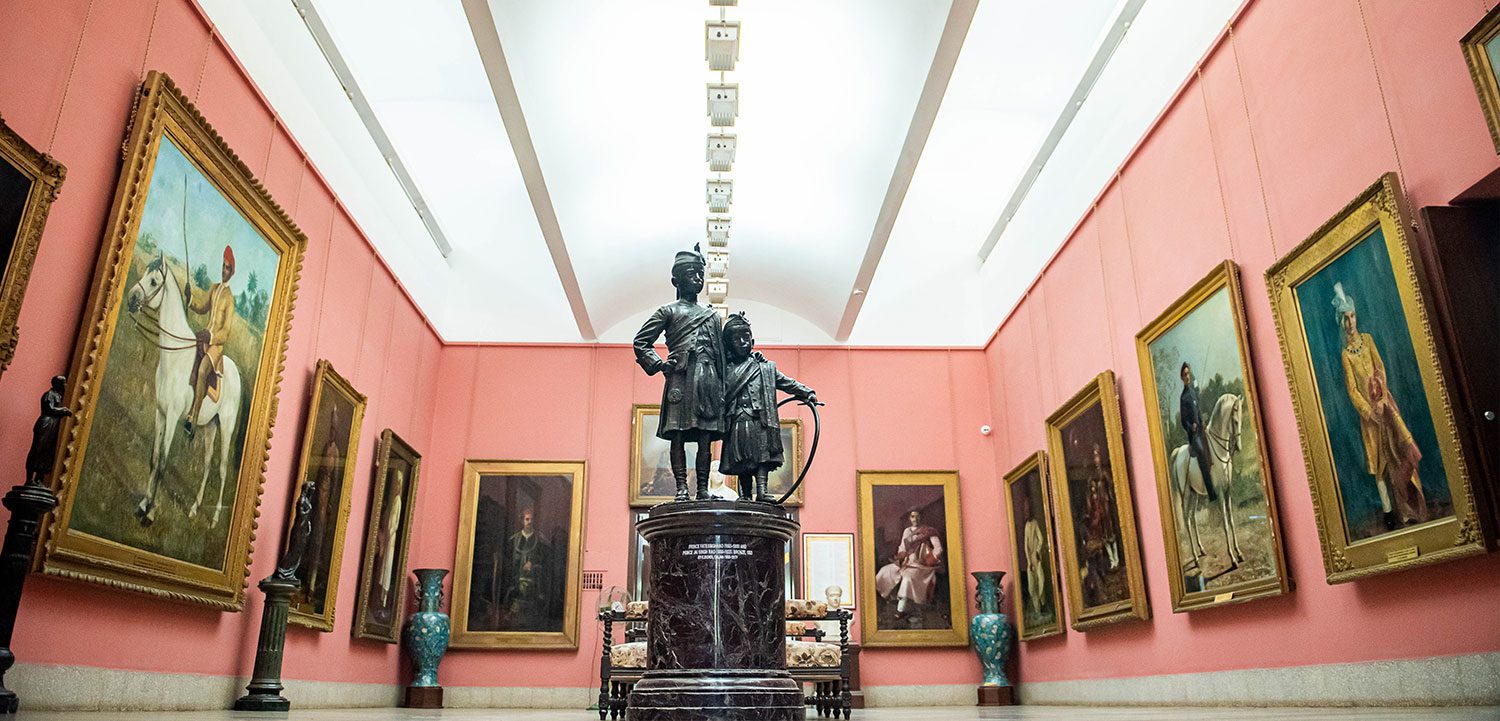
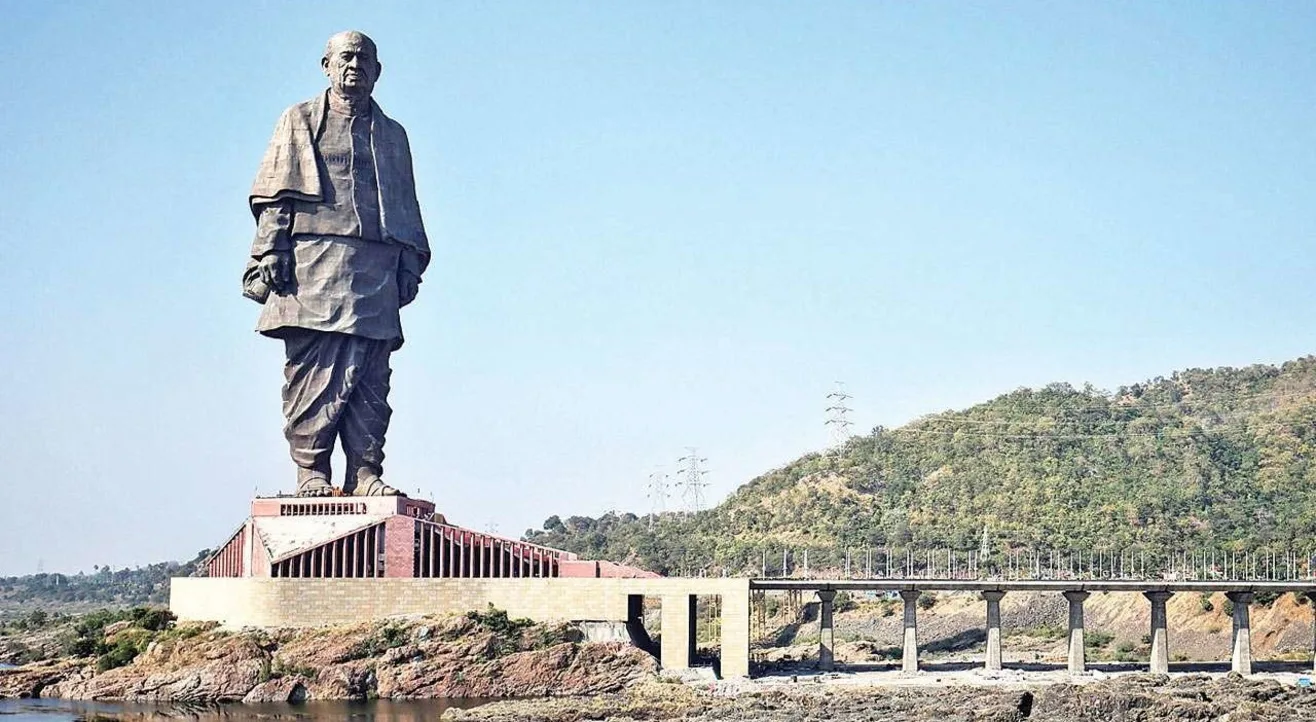
It’s huge, almost gigantic! That is the first reaction most people have as they speed down the winding road leading to the towering Statue of Unity (SoU). A long bridge connects the mainland to the Sadhu Bet Island, on which the statue stands. Silhouetted against the surrounding Vindhya and Satpura mountain ranges,
... the colossal statue almost seems to pierce the skyline. The legacy of Sardar Vallabhbhai Patel, India’s Iron Man, lives on in the form of this massive statue dominating the Narmada river basin. He towers over the landscape, as if, keeping an eye over the land he helped become independent. Standing at a height of 182 m, the Statue of Unity, is the tallest in the world. It depicts Sardar Patel in a walking pose, clad in his characteristic simple attire. About 100 times the height of a five-and-a-half-ft-tall person, one can see the statue from as far away as 8 km. Voyage combiné Rajasthan et Gujarat - Découvrir l'Inde avec Namaskar India Tour. The SoU was inaugurated on October 31, 2018, by Prime Minister Narendra Modi to commemorate Patel’s 143rd birth anniversary. The statue has been built on a star-shaped geometric base that covers the entire Sadhu Hill. It has a viewing gallery at 135 m, at the statue’s chest level, that can be reached via two high-speed elevators. The gateway to the elevators is through an exhibition gallery, in which you can marvel at a model of the statue and an elaborate blueprint, among other exhibits. The elevators travel 150 m in half a minute and can carry 26 people at one time. From the viewing gallery, reinforced with steel grids, you can take in the breathtaking views of the surroundings and of the Sardar Sarovar reservoir at a distance. Interestingly, it’s not just the statue that throws light on Patel’s life and achievements, but also a spectacular laser show, which talks in detail about the statesman’s life. It traces the life of Patel and talks about why the statue has been erected in his honour. The show also outlines the leader’s contribution to the nation. However, what really fascinates are the realistic projections that show Patel in different phases of his life: in a lawyer’s garb, images from his ‘Bharat Chodo’ movement (asking the British to leave India) and in his characteristic kurta pajama. Constructed by engineering giant Larsen and Toubro, SoU was built in a record time of 33 months. It is 177 ft taller than China’s Spring Temple Buddha statue (the second tallest in the world), which took 11 years to build. The SoU comprises two semi-joined, composite concrete cylindrical cores surrounded by a steel space frame to support the external cladding. The face of the statue is particularly noteworthy and 93-year-old sculptor Ram Sutar has made it to have a poised countenance. Patel’s head is held high with his arms at his side, and the leader is supposed to appear to be walking on water towards the Sardar Sarovar Dam, with his left leg placed slightly forward. Voyage au Gujarat avec agence francophone Namaskar India Tour. It is said that figuring out the perfect posture for the statue was a challenge. The engineers scanned around 2,000 photographs, and consulted several historians to choose the final picture. Finally, a 2-dimensional image was converted into a 3-dimensional model. Lire la suiteThe UNESCO World Heritage site of Champaner-Pavagadh Archaeological Park is marked by bastions and forts that begin from the Pavagadh Hills and extend into Champaner city. To get a peek into history, walk around this splendid site that is a well-preserved Islamic pre-Mughal city.
... With a large number of Hindu and Jain temples as well as mosques, most of which were constructed during the time of the Gujarat Sultanate, the city has a lot to boast. From step wells, cemeteries, granaries and fortification walls, it is clearly evident that a well-planned town once existed here. At the base of the hill was located the principal township, which included the royal palace (Hissar-i-Khas) and the Jama Masjid that was strategically planned in the centre with arterial roads reaching the nine gates of the city. Mosques were constructed near most of these gates at an elevation so that they were easily visible from a distance. Lire la suite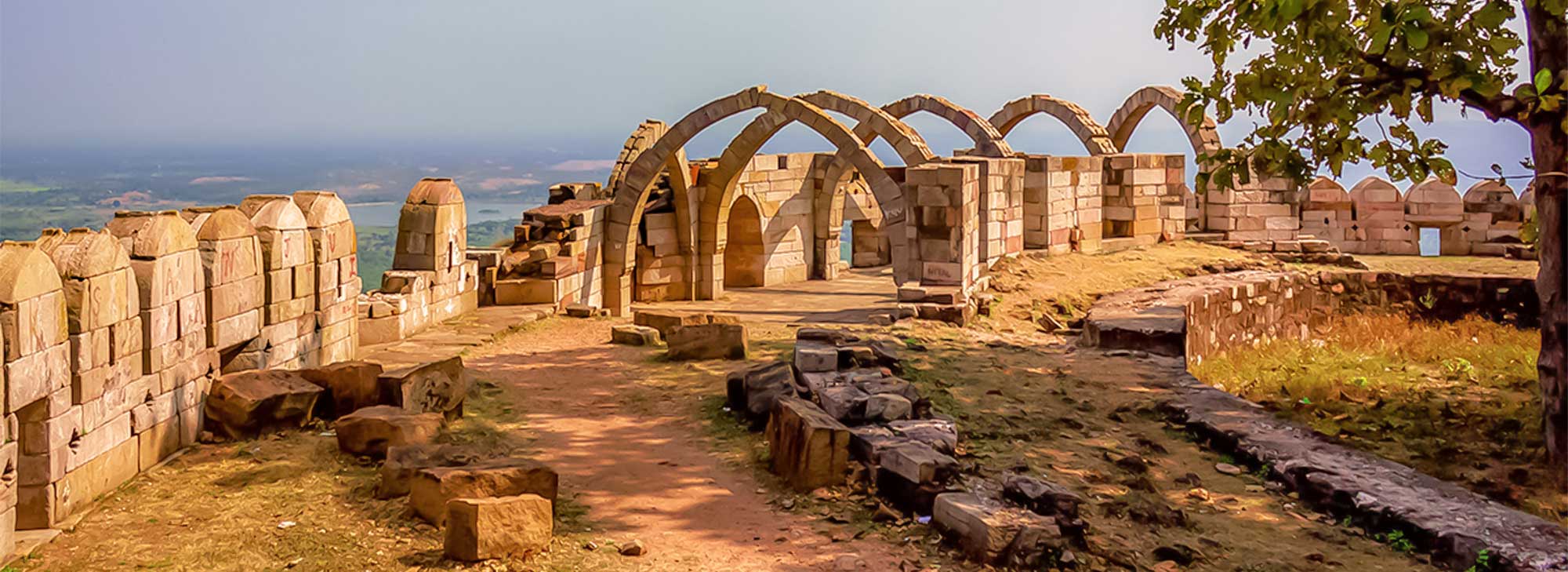
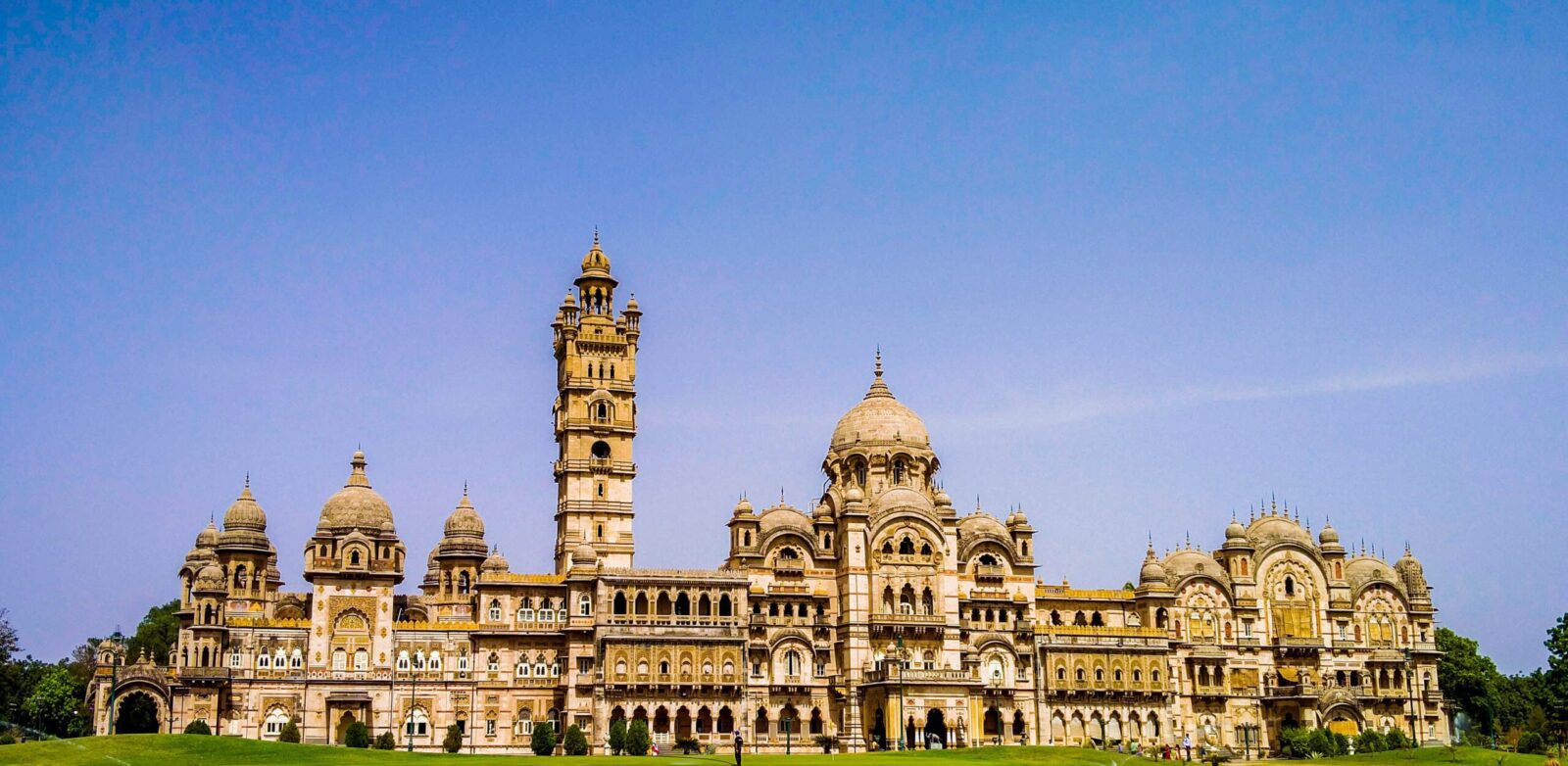
A gorgeous structure built in the Indo-Saracenic architectural style, Lakshmi Vilas Palace was constructed in 1890 by Maharaja Sayajirao Gaekwad III, the ruler of Baroda (1875-1939). The palace is spread over a vast area of 500 acre and houses many architectural riches. The ornate Durbar Hall is perhaps
... the most attractive and acts as a venue for occasional cultural events and music concerts. It is adorned with Belgian stained glass windows, a Venetian mosaic floor and walls with intricate mosaic decorations. Outside the Durbar Hall is an Italian courtyard with pretty water fountains. Also housed inside the palace are remarkable collections of old armoury, bronze, marble and terracotta sculptures. The lawns and gardens of the palace are also noteworthy and were landscaped and directed by William Goldring, who was also responsible for the royal botanical gardens. Other attractions inside the palace are Maharaja Fateh Singh Museum and Moti Baug Palace. It is said that Major Charles Mant was the architect of this magnificent palace. The Moti Bagh cricket ground lies right next to the museum, along with the offices of the Baroda Cricket Association. The complex also has Navlakhi Vav, a step well dating back to 1405 AD. Audio tours and guided tours of the palace are available for visitors. Lire la suite






